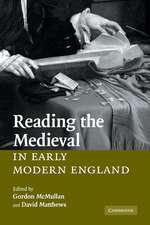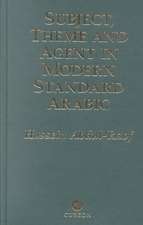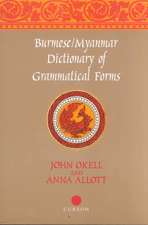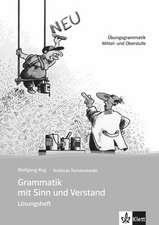Course in Nepali
Autor David Matthewsen Limba Engleză Hardback – aug 2016
The aim of this course, which covers the whole grammar and all the constructions of modern Nepali, is to present a full description of both the spoken and written forms of modern standard Nepali, and to enable the student to understand, speak and read most types of Nepali he or she is likely to encounter. The earlier lessons concentrate mainly on the spoken style, and the conversation passages whilst the later lessons concern religious, political and literary topics.
Nepal is a land which already provides great enjoyment to the increasing number of visitors from the west. A knowledge of the language leads to a deeper understanding of the culture of its people, and the object of A Course in Nepali is to provide the means of learning it without much difficulty. Earlier editions of this course have been the standard book for students at the School of Oriental and African Studies, and it is without question the established market leader.
| Toate formatele și edițiile | Preț | Express |
|---|---|---|
| Paperback (1) | 450.40 lei 6-8 săpt. | |
| Taylor & Francis – iun 1998 | 450.40 lei 6-8 săpt. | |
| Hardback (1) | 1224.74 lei 6-8 săpt. | |
| Taylor & Francis – aug 2016 | 1224.74 lei 6-8 săpt. |
Preț: 1224.74 lei
Preț vechi: 1493.58 lei
-18% Nou
Puncte Express: 1837
Preț estimativ în valută:
234.35€ • 244.20$ • 194.04£
234.35€ • 244.20$ • 194.04£
Carte tipărită la comandă
Livrare economică 03-17 aprilie
Preluare comenzi: 021 569.72.76
Specificații
ISBN-13: 9781138145917
ISBN-10: 1138145912
Pagini: 356
Dimensiuni: 152 x 229 x 21 mm
Greutate: 0.64 kg
Ediția:1
Editura: Taylor & Francis
Colecția Routledge
Locul publicării:Oxford, United Kingdom
ISBN-10: 1138145912
Pagini: 356
Dimensiuni: 152 x 229 x 21 mm
Greutate: 0.64 kg
Ediția:1
Editura: Taylor & Francis
Colecția Routledge
Locul publicării:Oxford, United Kingdom
Cuprins
Preface, Abbreviations, Pronunciation and script, Lesson 1: nouns; adjectives; cha, ho; possessives; postpositions., Lesson 2: plural forms; plural and negative verbs; questions; greetings; ko, ke; the postposition -ko; polite expressions; -b?ta, -dekhi., Lesson 3: personal pronouns; the verb 'to be'; feminine forms; comparison of adjectives; the particles po, ni, h?y, ta; koh?, keh?., Lesson 4: more postpositions; the oblique case; expressions of time; numeral classifiers; 'to have', rahecha., Lesson 5: verb bases; Simple Indefinite; emphatic forms; Present Continuous. , Lesson 6: negative verbs; the direct object; -Ie; kahile; kat?y; honcha., Lesson 7: fractions; more expressions of time; -tira; -c?h?; ko, koko; compound postpositions; jasto; arko, ar?; the Imperative; re., Lesson 8: Secondary Verbal Base; Simple Past; thiyo; bhayo; days of the week. Lesson 9: I-Stem verbs, open conditions, expressions of price, weight and measure; other forms of the Imperative., Lesson 10: Conjunctive Participles; reported speech; l?gno; parno; expressions of age., Lesson 11: necessity: 'must', 'have to'; ?phno; the Second Infinitive., Lesson 12: First Perfect Participle; more uses of the Second Infinitive; sakesamma., Lesson 13: First Perfect Tense; First Perfect Participle with ta and tara; First Pluperfect Tense; more uses of the Second Infinitive., Lesson 14: Infinitival Participle; bbanne; the Nepali calendar., Lesson 15: Infinitival Participle (cont.); Infinitival Future; Third Infinitive., Lesson 16: Second Perfect Participle; conditional and concessive clauses; pronominal adjectives and adverbs; Second Perfect Tense; Second Pluperfect Tense., Lesson 17: The Injunctive; Future Tense; hol?., Lesson 18: Past Habitual; impossible conditions; causative verbs., Lesson 19: Imperfect Participle; continuous tenses; literary forms of verbs., Lesson 20: Absolutive Participle; frequentative and continuous tenses; compound verbs; 'royal honorific'; -jeI., Appendix 1 The Nepali numerals., Appendix 2 Geographical terms., Appendix 3 Nepali relationship terms., Key to Exercises., Nepali-English Vocabulary.
Descriere
This course, covering the full grammar and all contructions of modern Nepali, presents a full description of written and spoken Nepali, enabling students to understand, speak and read most types of Nepali encountered today.














